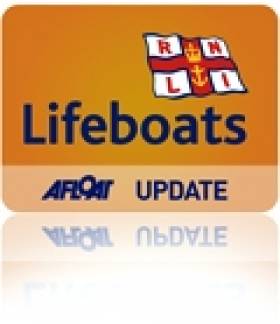Displaying items by tag: Paul Kehoe
Paul Kehoe is “Sailor of the Month (Services to Sailing) for January
There are times when somebody is so skilled in doing good work by stealth that their achievements tend to be hidden in plain sight. We were all reminded of this is in mid-January at the annual international AGM of the Old Gaffers Association, when Paul Kehoe of the Dublin branch was awarded the Jolie Brise Trophy for an exceptional contribution to preserving traditional gaff rig as a viable part of the contemporary sailing scene.
Paul had been “the-man-who-kept-the-show-on-the-road” for so long with the much-travelled Clondalkin community-built classic Galway Hooker Naomh Cronan that the rest of us simply took it for granted. And this attitude persisted even when he organised ace traditional shipwright Donal Greene to give the Cronan a major up-grade in Malahide before she was trucked across Ireland to the new custodianship of the badoiri of Galway City.
The Clondalkin team had moved on to a new Bermuda-rigged vessel more suited to their changing demographic. But with Paul still in the key role, it seemed almost like a seamless change from the “people involved” point of view. Thus it took the Jolie Brise Trophy award to shake us out of our blinkered viewpoint, and we are honoured to make Paul Kehoe the Afloat.ie “Sailor of the Month (Services to Sailing) for January 2022.
 The Naomh Cronan re-fitted in Malahide Shipyard, and ready for trucking to new custodianship in Galway. Included in photo are Paul Kehoe (fourth right), DBOGA President Johnny Wedick (left) and master shipwright Donal Greene (right). Photo: Cormac Lowth
The Naomh Cronan re-fitted in Malahide Shipyard, and ready for trucking to new custodianship in Galway. Included in photo are Paul Kehoe (fourth right), DBOGA President Johnny Wedick (left) and master shipwright Donal Greene (right). Photo: Cormac Lowth
Terry Johnson Recognised for his Work with RNLI Ireland
Approximately forty Life Governors of Irish Water Safety were in attendance at the ceremony. They included former Minister Bobby Molloy, former Director of the Coast Guard Captain Liam Kirwan, former Chairman of the National Safety Council Cartan Finnegan to name but a few. Also in attendance was Commodore Mark Mellett DSM, Flag Officer Commanding the Naval Service, Mr. Chris Reynolds current director of the Coast Guard.
Guest Speakers were Mark Mellett, Director of the Naval Service, TJ Mc Carron, Ballybunion Community Rescue Boat, Eddie Breen and County Manager of Wexford Co Co.





























































